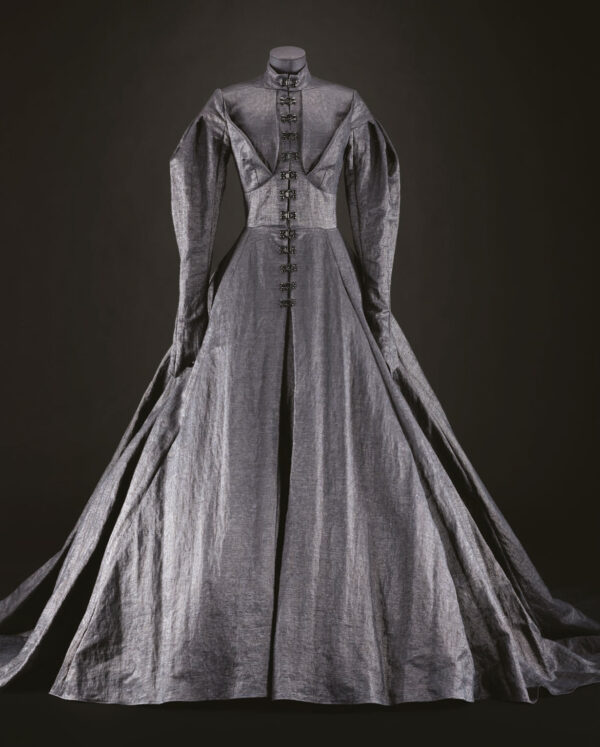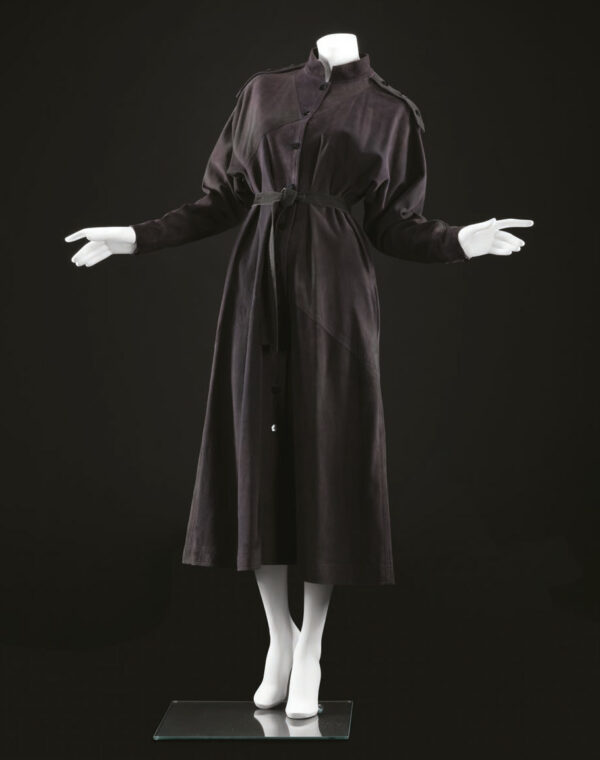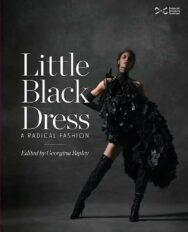‘The little black dress has become a constant in modern fashion’s complex histories. Its simple form offers a dark mirror in which contemporary debates around beauty, identity and culture find reflection and distortion before the next age wipes the glass and remakes the image anew.’
In this gorgeous new publication by National Museums Scotland, a series of writers reflect on the phenomenon of the ‘little black dress’, its historical, social and cultural relevance, and what we can learn by studying its changing role throughout history. Read part of the introduction by National Museums Scotland Director Christopher Breward below.
Little Black Dress
Edited by Georgina Ripley
Published by National Museums Scotland
As the authors in this timely book demonstrate so clearly, the little black dress has become a constant in modern fashion’s complex histories. Its simple form offers a dark mirror in which contemporary debates around beauty, identity and culture find reflection and distortion before the next age wipes the glass and remakes the image anew. I came of age, sartorially speaking, in the 1980s when pop culture was both re-discovering the classic looks of the 1950s and reshaping ideas of sexuality for the MTV and club generation. I remember that in London at least, the little black dress signified the retro-chic of a rediscovered café-culture, embodied by the commodified image of Audrey Hepburn, and a more gutsy reinvention of the torch-singer where, paired with boots, scarlet lipstick and sunglasses, its simplicity suited the style of a new wave of female pop icons from Sade to Madonna. Forty years on, its meanings have shifted once more and, as the following chapters suggest, the LBD (an acronym that suits the politics of now) embraces a new energy, pulling even fewer punches. These are times, of course, in which pulling no punches has become a shorthand for survival. The book itself is testament to the resilience of its editor and contributors, and National Museums Scotland in which the project was conceived and delivered. All of us were faced with the unprecedented challenges of he global pandemic, and the exhibition plan which has driven the research and approach of the book has had to be postponed several times. We are pleased that it now has a slot in our future programme and our thanks go to Baillie Gifford for their sponsorship of the exhibition. The prescience of the subject matter, however, means that the publication should come first and I am delighted with the originality and range of the book’s content. Here we can read about the symbolic meanings of black garments in the past; the appeal of the LBD to 20th-century fashion designers in Paris, Milan, London and New York; its particular history in the evolution of avant-garde fashion in Japan; the sexual connotations which the LBD has always carried; its role as a canvas for technological innovation; and its future as a vessel for revolutionary change, particularly in relation to those questions of equality that frame current thinking around race, gender and the environment.
It is, of course, fitting that a museum should initiate work on the transformation of the LBD, especially one with a significant fashion collection. For while a key appeal of the LBD and the secret of its longevity is its simple graphic nature, lending its form to striking abstraction and fetishization through advertising, film and photography, its three-dimensional materiality offers it up as the perfect sartorial palimpsest. To arrange one dress form, in one colour, through its iterations over the years, allows the curator to construct a timeline of the utmost purity, reducing dress to an aesthetic algorithm or a sequence of specimens – to be closely examined, admired and compared. The idea is a beautiful one, but real life is messier than that and I am pleased this book, and the exhibition to follow, embrace contradiction and complexity, for the LBD is nothing if not a vital, challenging concept. The task of disrupting its status as a barely changing fashion ‘classic’ is long overdue and it is time both to appreciate beauty, but also to acknowledge its underlying power.
The final chapter of the book, in drawing on responses from several respected curators, educators, collectors and fashion professionals, shows how the LBD inspires divergent perspectives and opinions. Georgina, our Principal Curator and editor, set me the same questions asked of our contributors, but of course I have a conflict of interest, both as museum Director and as a historian of masculinities and fashion! Nevertheless, I can’t resist the challenge. The essence of the perfect LBD for me lies in its striking, sometimes terrifying simplicity. When I think of it, I think of the sublime images of Princess Diana in Christina Stambolian’s dress at the Serpentine Gallery fundraising gala during the very public playing out of her separation from the Prince of Wales in 1994. The press named it the ‘Revenge’ dress, and it certainly captures the operatic sense of drama that black often evokes for me. It is perhaps that ‘statement’ quality which lends the LBD to design interpretation again and again. Like a bold signature in black ink, the LBD is a cipher for character and personality: costumed calligraphy. In that sense its formal qualities are not so far removed from my own territory – the masculine suit. The LBD and the suit are almost translations of each other. Yves Saint Laurent’s famously bisexual Le Smoking tux for women bridges the gap. Both are fashion ‘myths’ in the true meaning of the word.

Olivier Theyskens, Look 38 Ready-to-Wear Autumn/Winter 2019, on loan from Olivier Theyskens, Image @ National Museums Scotland

Jean Muir Ltd, British, 1966–1995. National Museums Scotland K.2005.649.1392.1 and 2. Image @ National Museums Scotland
Little Black Dress edited by Georgina Ripley is published by National Museums Scotland, priced £30.00.
ALSO IN THIS ISSUE

 Spec Fic for Newbies
Spec Fic for Newbies
‘The latter half of the twentieth century began to see the dominance of women writers in the dystopi …

 Rainy Day Edinburgh
Rainy Day Edinburgh
‘Scotland is notorious for its inclement weather and there are dozens of words to describe the weath …













